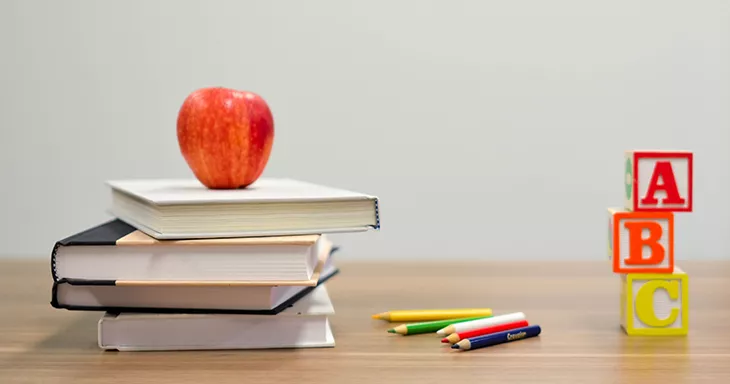Many kindergartens or primary schools require a variety of educational, informational and other resources to aid their pupils in developing and learning. Examples of the things that might be required include: Curriculum materials- These materials are designed to support the learning objectives of the school's curriculum. They could comprise textbooks, workbooks lesson plans, and other resources.
Classroom supplies: Classroom materials such as pencils, papers, glue, scissors, and other art supplies are crucial for toddlers to complete their work and projects.
Educational technology – In this digital age, educational tech like tablets and computers will provide students with more resources to aid in their education.
Books- Kindergarten and primary schools need a wide range of age-appropriate books to encourage reading and develop language.
Manipulatives - Puzzles, blocks and many other games may help develop children's spatial awareness, problem-solving and problem-solving skills.
Visual aids. Visual aids like posters, charts, and maps can help children comprehend and retain important concepts.
Materials for art and music- Materials for art and music such as instruments, paints and clay supply children with an outlet for creativity and help them express themselves.
Safety equipment is essential for students as well as staff's safety. These include the first aid kit, fire extinguishers or emergency plan posters.
To provide a secure, stimulating environment for learning in kindergartens and primary school students, they need to have an array of instructional and educational materials. Have a look at the top rated sostegno infanzia for more tips.
What Math Materials Are Required In Italian Nursery Schools?
Support for mathematics teaching materials is a great idea in Italian nurseries, helping children improve their spatial, numerical and problem-solving capabilities. Here are some examples for materials for math instruction: Training of caregivers and teachers. Teachers and caregivers have to be trained on how to incorporate mathematical concepts into everyday activities.
Plans for lessons and curriculum: A well-designed lesson plan and curriculum which incorporate mathematical concepts help ensure that kids are exposed the various mathematical concepts and skills.
Children can learn math visually through manipulatives such as counting bears, beads and blocks. Posters and charts are also effective visual aids.
Technology-based learning aids for children. Technology aids like tablets that contain educational math apps or games could help to kids learn more and offer them additional resources.
Assessment tools: Assessment tools can assist caregivers and teachers monitor the children's progress and determine areas where more support might be required.
Parents can get involved in math education. Parents' involvement in math education can strengthen concepts learned in nursery, and encourage family engagement in learning.
It is vital that the tools used to support mathematics education are appropriate for children of all ages. Teachers and caregivers can make use of these resources to develop exciting, interactive math games that encourage curiosity and enthusiasm for learning in children. Take a look at the best materiale didattico matematica sostegno for website recommendations.

What Science Teaching Materials Are Needed In Nurseries Of Italy?
Support for science teaching materials can be useful in Italian nurseries, helping young children explore and discover the world around them. Here are some examples where science teaching materials may be required curriculum and lesson plans A well-planned lesson program and curriculum that integrates scientific concepts can ensure that the children are exposed to and understand many concepts in science.
Manipulatives & visual aids: Visual aids like posters, charts and nature specimens and even simple science experiment kits as well as magnifying lenses can help students learn about scientific concepts by making it up for themselves.
Videos and books. Books that focus on science-related topics, such as animals, plants, and space, are great for children to be entertained and provide more resources.
Outdoor learning spaces: Learning areas like playgrounds and gardens can offer opportunities for children to explore and discover the natural world around them.
Participate with parents in the learning process Engaging parents in the process of learning can help reinforce concepts learned in the nursery. This also promotes family engagement.
Assessment tools. These tools can help teachers and caregivers monitor the progress of their students and determine areas that require additional attention.
It is crucial to make sure that the science teaching material support provided is appropriate for children of the ages of 0 to 5 years old. children. Teachers and caregivers can utilize these materials to develop engaging and interactive science activities that promote children's curiosity and enthusiasm for learning. Read the most popular schede didattiche scienze sostegno for site examples.

What Kind Of Geography Materials Should Be Used In Italian Kindergartens?
Italian nurseries are able provide children with geography education material to aid them in developing a greater knowledge of the world around them, and teach them about other cultures and environments. Here are some potential examples of geography-related materials. Maps: They can aid children in understanding the geography of different regions and countries and their geographical location.
Globes: Globes let youngsters to understand oceans, continents and other aspects of the earth.
Pictures and Videos: Pictures and videos that show diverse cultures and locations are a great way to teach youngsters about the diversity that exists in the world. They can also discover about the different ways people live.
Books Age-appropriate books and feature cultures and places all over the world could help children develop a curiosity for geography.
Natural materials. Materials such as shells and plants are great to teach children about ecosystems.
Field trips: Field trip to local parks or museums, zoos, and Zoos are a great way for children to get an experience that is hands-on and gives them the chance to explore geography in a more realistic setting.
Choose geography teaching materials which are appropriate for the age group and mindful of differences in culture. Teachers and caregivers can make use of these resources to design engaging and engaging geography lessons that encourage children's curiosity as well as fascination with the world that surrounds them.
